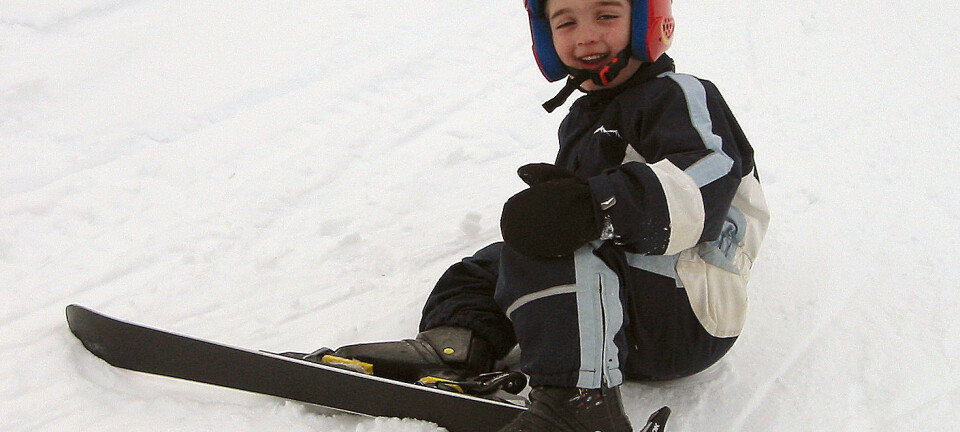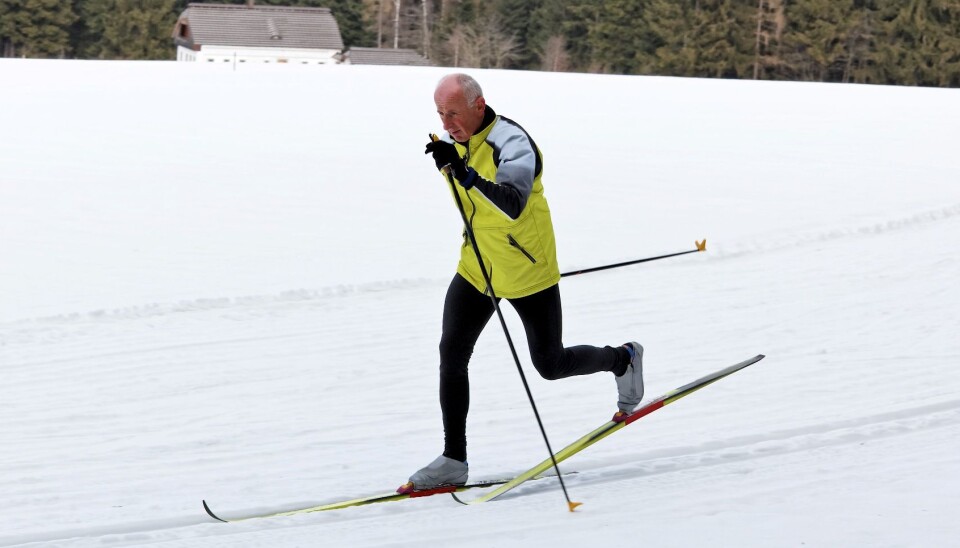
The physics of cross-country skiing
You don’t need a science degree to grasp the physics of Nordic skiing. And even physics nerds need more glide when kicking forward on cross-country skis.
Denne artikkelen er over ti år gammel og kan inneholde utdatert informasjon.
You click your boots into the bindings and strap on your poles. Snow crystals are twinkling a welcome on the perfectly prepared track ahead of you.
After a few kilometres your body has warmed up and you’ve established a rhythm. You exhale clouds of breath as you forge ahead like a steam locomotive.
And your body’s machinery follows the same laws of physics as a locomotive. Cross-country skiing is a technical display of balanced forces. In other words, Nordic skiing is also physics.
Here we’ll take a closer look at the some of the artful applications of physics that are taking place under the base of your skis on a refreshing Sunday jaunt in the snowy woods.
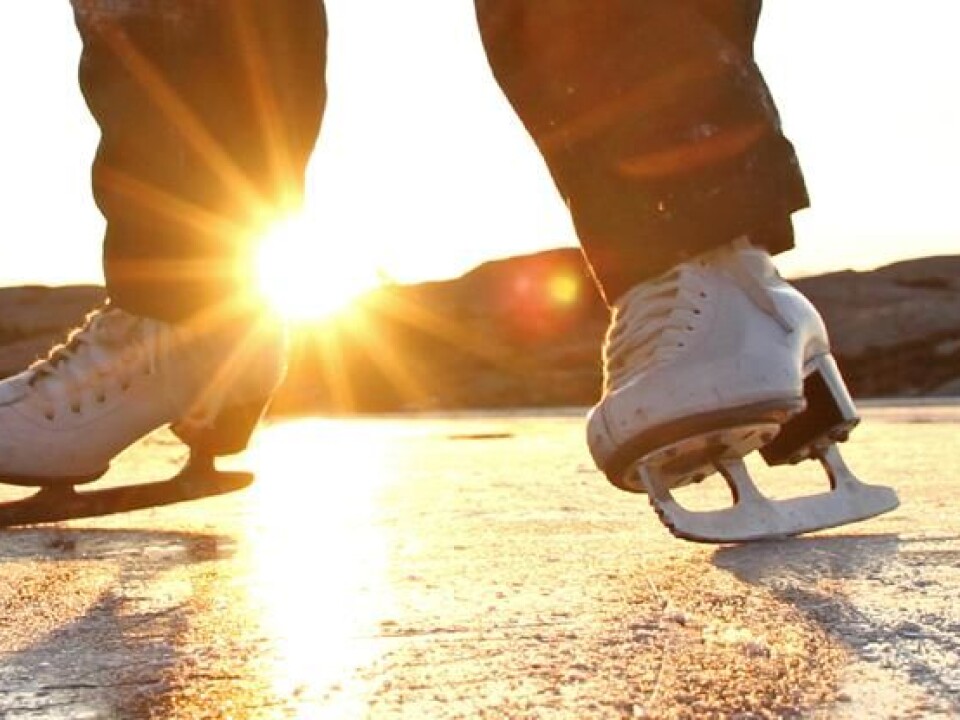
Let’s start with the fundamentals: Why even use skis? Why not just skate along on the soles of your boots?
This isn’t as silly a question as it might sound once you get down to the nitty-gritty of ski-waxing. If Hamlet had been Norwegian instead of Danish it might have been – to ski, or not to ski?
Fine without skis
And the surprising answer is that if the snow is hard enough you can get along without skis, at least if your boots have smooth soles.
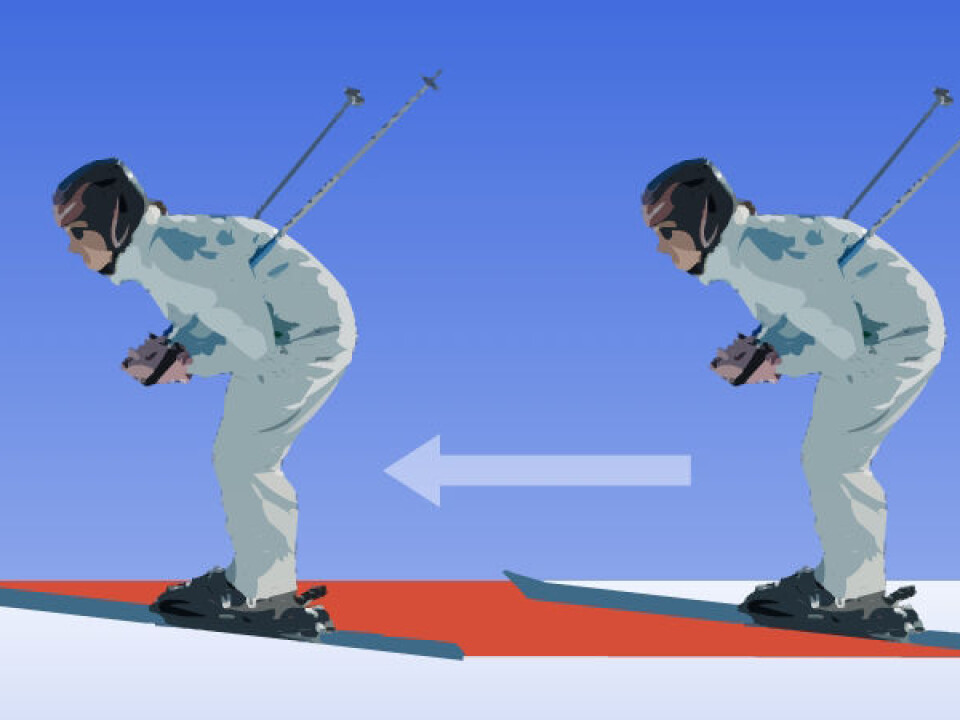
Friction, or resistance to slippage, is actually the same whether you have a small area beneath you, like your boots, or a large one, like skis.
This is fairly evident if you have hard ice under your boots. Or you’re on ice skates, for that matter. Despite smaller areas of contact they glide as easily as skis.
Snowshoe effect
But snow isn’t as hard-packed as ice. On a softer surface skis will enable you to glide better because of the snowshoe effect. You spread your weight on a larger area and you don’t sink down much as your skis swish across soft fresh snow.
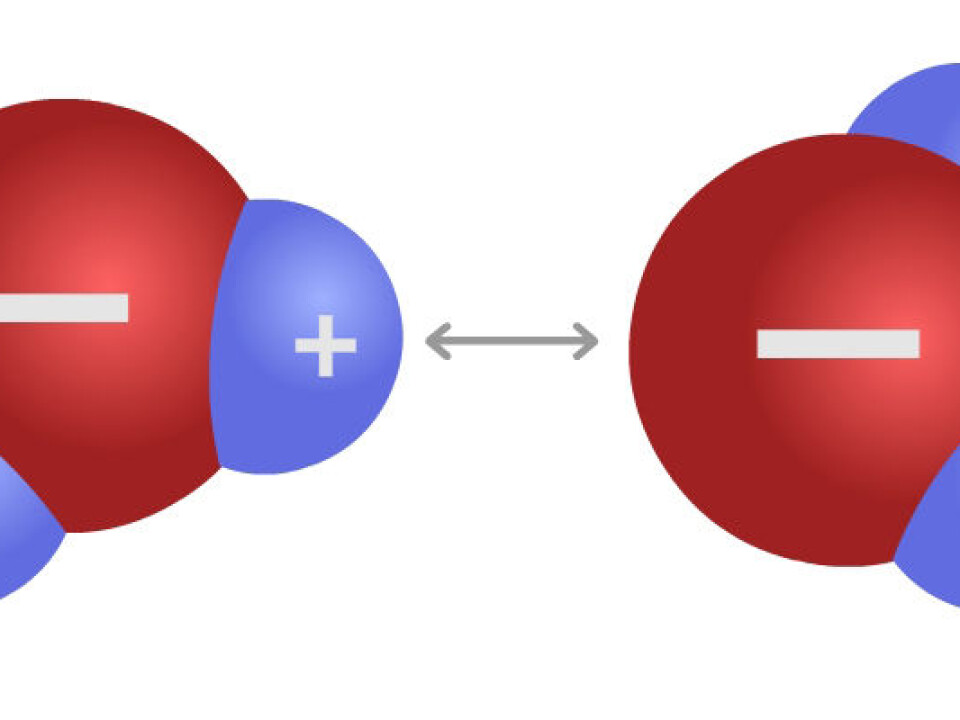
Sinking down is a waste of energy. You expend energy compressing the snow when it gives in. This adds to increased friction.
Of course friction also increases in the forward direction when you make your own virgin tracks in snow. Your skis sink down in the snow and the tips have to plough through it instead of riding up on top of it.
But in prepared tracks the snow has been compacted. And the harder the snow the less problem you have with the snowshoe effect. Skis that are constructed for modern machine-prepared tracks can be narrower and shorter than the cumbersome skis of yesteryear.
Yes please, I’ll take both
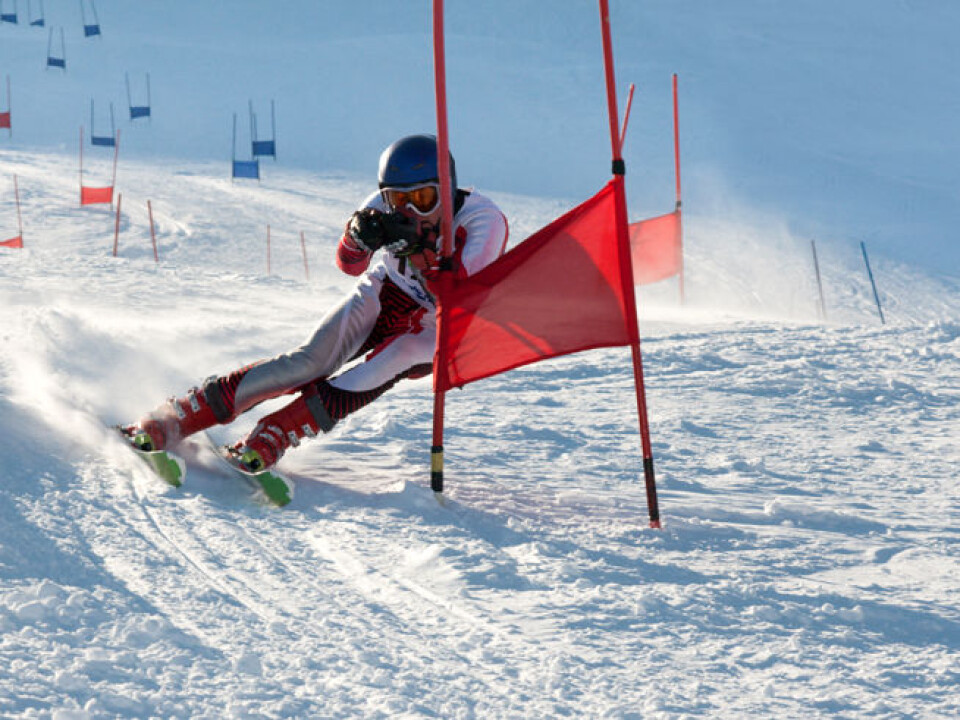
Skis don’t lie flat against the underlying snow in the longitudinal direction, as the case is with snowshoes. They’re arched like the profile of an angry cat. What’s the point of this camber in the skis?
The idea is that a skier will be wanting both high and low friction. “Yes please, I’ll take both, but every other stride.”
Friction should be low when a ski glides ahead in the classic kick-and-glide technique. But when you kick back it should grip the snow. Then you want friction to be high.
So you get arched or cambered skis, perfectly adjusted to your weight.

When you guide a ski forwards, or are skiing down a slope, the weight on the ski is decreased. The camber ensures that the middle area of the ski isn’t in contact with the snow.
When you kick back, you place your entire body weight on that ski, pressing the middle section down into the snow.
Waxing for grip
But why does the pocket or kick zone of the ski give more grip than the tip and tail? Because that midsection is waxed, or often waxed with a different substance than the tips and tails of the skis. The purpose of normal waxing is to improve grip and increase friction.
The issue of what kind of wax provides the best friction is more a matter of chemistry than physics. And maybe a dash of superstition, as some fanatical ski-waxers are as secretive as voodoo high priests. But the thing to remember is that colder temperatures make for sharper and more edgy snow crystals.
Sharp crystals hook to the wax like Velcro. Snow will clump under the middle of the ski. To prevent that from happening, the wax must be harder. So, more frigid snow conditions require harder waxes.
Instead of waxing the middle section of the ski, it can be roughed up. This is known as rubbing. The plastic material on the base of the ski is slightly shredded by rubbing it with an abrasive, such as sandpaper, and it gets a better grip on the snow. Kind of like having studded tyres on your car.
Snow skis and water skis
Grip wax is used on cross-country skis. When we use alpine or Telemark skis we want as much glide as possible because gravity is taking us down the slopes.
But once you get off the chairlift and start your run you’re actually waterskiing. That’s because a thin film of water on the snow is what provides the glide.
Friction between a ski and the snow steals some of your energy. This energy is transformed to heat. The heat melts a thin layer of the snow.
This layer of water isn’t going to drown anyone. It’s just a film − a few thousandths of a millimetre deep. This depth regulates your glide.
In colder, freezing temperatures this water layer can be too thin for good skiing. The snow crystals scrape against your skis, making them sluggish.
In mild weather the water layer gets too thick. This will make the layer act like glue between the snow and your skis. Once again – less glide and a slower ride. The glue effect is caused by the electrical charge of water.
Adhesion and cohesion
Water consists of the two elements hydrogen and oxygen. They combine to form water molecules in a roughly triangular shape. The hydrogen side of the triangle is positively charged and the oxygen side is negatively charged.
This means that the plus side of one water molecule is attracted to the minus side of molecules of other substances. Water sticks to these other compounds in a weak bond. This is known as adhesion.
You’ll see this on your windowpane when drops of water adhere to it.
The plus side of a water molecule is also attracted to the minus side of an adjacent water molecule. They crowd together.
That’s why water molecules form drops. The droplet is the result of all the water molecules clinging together as tightly as they possibly can. That’s called cohesion.
Waxing for glide
Adhesion and cohesion will make the snow clump to your skis. Adhesion makes the water gum to the base of your ski while cohesion makes the water stick together and drag on your skis if the water layer is too thick.
The ideal thickness of the water layer beneath a ski is eight-thousandths of a millimetre. The goal of glide wax is to make the water layer just right. This is a type of ski wax that decreases friction and thus improves glide.
It isn’t applied to the kick zone in the midsection, like grip wax. It’s intended for the tip and tail of the Nordic ski, where the ski glides the best. For swooshing downhill on alpine slopes it’s applied under the entire ski.
In colder weather glide wax needs to be hard and slippery. It mimics the gliding job that a thicker film of water would do.
Glide wax made for milder weather is water resistant. It counteracts the adhesion caused by a water layer that is too thick.
Scrape, don’t wax!
The Russian researcher Leonid Kuzmin thinks glide wax is a lot of bunk. In research he conducted at the University of Luleå in Sweden he claimed he could demonstrate that the hi-tech glide products in the ski shops are just marketing gimmicks.
He thinks glide wax only had a function back in the days of wood skis. According to Kuzmin, plastic skis are already so slippery and water resistant that any application of such a wax is superfluous. He recommends using a steel scraper and brushing the tips and tails with a steel brush afterwards to remove old grip wax and grime from the ski tracks.
This makes skis stay smooth longer, he says.
When this scientific report with such revolutionary results was to be presented at the University of Luleå in 2006, a major ski wax producer threatened to stir up doubts about the university’s credibility, according to the local newspaper Kuriren.
The newspaper wrote that the Swedish university was obliged to evaluate security measures when Kuzmin presented his research work.
Out of fairness it should be added that Kuzmin produces his own steel scrapers and brushes and sells them on the internet.
Skating, not classical
Skate skiing or freestyle has conquered ground against the classic diagonal stride, and that too can be explained with physics.
So far we have described friction in this context as if it were a single, constant quantity. And friction really is nearly the same independent of speed, across a large area.
That is, with one significant exception: when speed is zero.
Two kinds of friction are in play, static friction and kinetic friction. Static friction at a standstill is nearly always greater than the kinetic friction you have when an object is in motion.
The classic diagonal cross-country skier lets his or her skis swing back and forth like a pendulum past short instants and points when they’re at a standstill. In these moments each ski is held back by greater static friction, allowing the skier to kick ahead with the other ski.
When using the skate technique the skis are in constant forward motion. This enables the skier to avert static friction and maintain a higher average velocity.
But does the classic cross-country skier ponder science, while huffing and puffing to the shelter of the next south-facing slope, where a respite from cold winds allows a quick snack of that orange in the backpack?
Probably not. To the skier, it's less about physics and snow condition and more about muscles and physical condition.
----------------------------
Read this article in Norwegian at forskning.no
Translated by: Glenn Ostling
External links
- Physics of Skiing and Wax by Tyler Freeman
- The Physics of Skiing - Real World Physics Problems
- More about friction, from the website Hyperphysics
- Leonid Kuzmin’s website with link to his research







